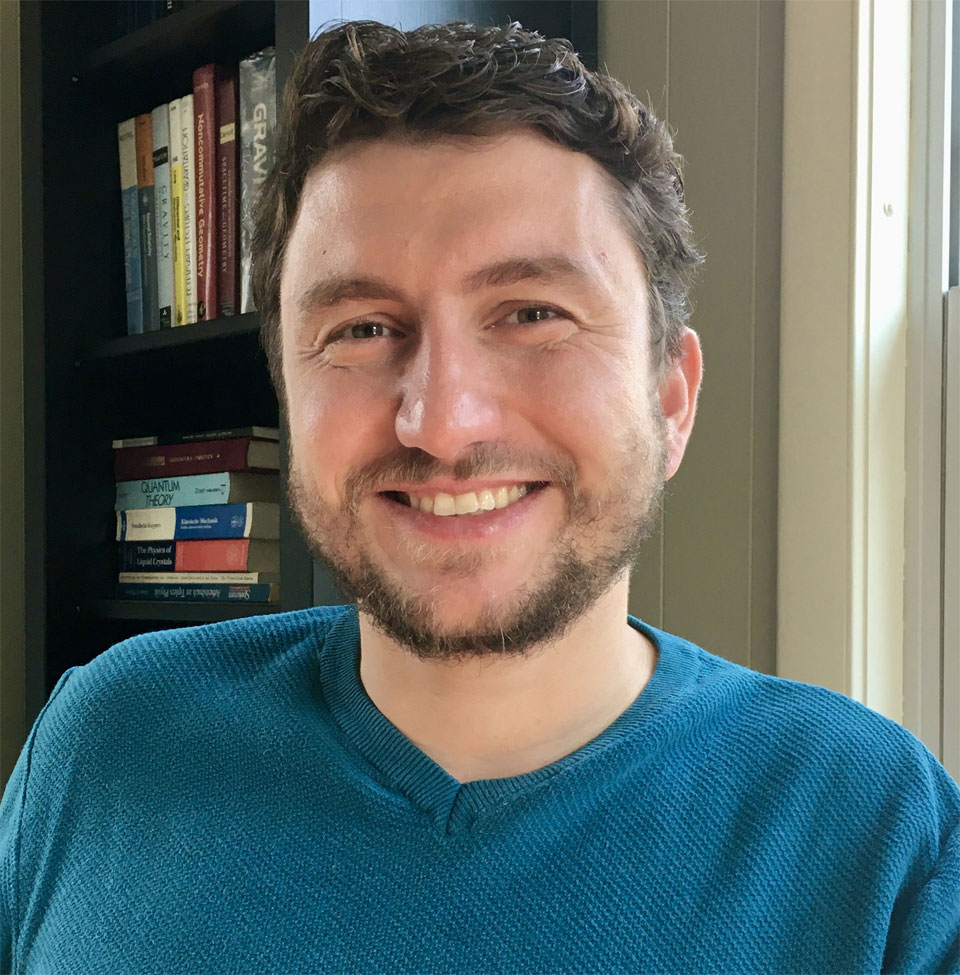Markus Basan, 2021

Who he is
After undergraduate studies in physics at ETH Zurich and Harvard University, Markus obtained a PhD in theoretical physics working with Jean-Francois Joanny and Jacques Prost at the Curie Institute. He went on to do postdoctoral studies in the labs of Terry Hwa at the University of California at San Diego and Uwe Sauer at ETH Zurich before joining the Department of Systems Biology at Harvard Medical School.
What he does
The complexity and heterogeneity of biological systems are formidable obstacles that must be overcome for achieving a more quantitative and predictive understanding of physiology and phenotypes on the cellular or organism scale. Such a level of understanding has remained largely elusive in biology, despite the extraordinary level of detail to which molecular interactions have been characterized over the past decades, as it often remains unclear how to harness detailed molecular knowledge to achieve this goal.
In our lab, we try to tackle these challenges by identifying phenotypic patterns that can guide us in decoding the underlying molecular mechanisms and principles, which govern the behavior of complex biological systems. Our approach relies on the close coordination and mutual feedback between experimental and theoretical efforts and we combine careful characterization of physiology, genetic perturbations, omics technology and theoretical models.
Fundamental biological questions that we are interested in include the role of metabolic strategies during growth and adaptation, tradeoffs between competing evolutionary objectives of microorganisms and how cells achieve homeostasis of cell size, cell number and cellular composition, as well as the breakdown of these mechanisms in disease. We use the well-characterized model organismsEscherichia coli and Drosophila melanogaster to address such questions.
News from the Lab
In our most recent work entitled “Trade-offs in adaptation to glycolysis and gluconeogenesis result in a preferential flux direction in central metabolism “, we present a model that captures a remarkable self-organization of metabolism in response to nutrient availability: key regulatory metabolites respond to the directionality of flux and adjust activity and expression levels of metabolic enzymes to efficiently guide flux through the metabolic network. The model reveals a fundamental limitation of flux-based sensing: after nutrient shifts, metabolite levels collapse and the cell becomes ‘blind’ to direction of flux. The cell can partially overcome this limitation at the cost of three trade-offs between lag times, growth rates and metabolic futile cycling that constrain the efficiency of self-organization after nutrient shifts. We show that these trade-offs impose a preferential flux direction and can explain the glycolysis preference observed for Escherichia coli, Saccharomyces cerevisiae and Bacillus subtilis, which only shift fast to glycolysis, but slow to gluconeogenisis Remarkably, as predicted from the model, we experimentally confirmed this preference could also be reversed in different species. Indeed, P. aeruginosa shows precisely the opposite phenotypic patterns, switching very quickly to gluconeogenesis, but showing multi-hour lag times that sharply increase with pre-shift growth rate in shifts to glycolysis. These trade-offs between opposing flux directions can explain specialization of microorganisms for either glycolytic or gluconeogenic substrates and can help elucidate the complex phenotypic patterns exhibited by different microbial species.


